Genre: RPG Developer: BlueSky Software Publisher: Electronic Arts Players: 1 Released: 1993
Sometimes you encounter some unsuspected surprises. I picked up TechnoClash not knowing what to expect. A generic shooter, perhaps? A run-‘n-gun? Some sort of RPG element? However, the surprise came from another direction entirely. When I looked at the game credits, I was astonished to learn that Doug TenNapel was one of the sprite artists, making this one of the earliest titles he ever worked on. It piqued my interest. I’m a big fan of TenNapel’s work, be it his computer graphics or his graphic novels, so I decided to give this one a try. If anything, it would probably have some nice graphics going.
Ronaan, the hero of this game, also has encountered his share of surprises. He’s a wizard from the Inner Realm, a world of magic, that is at war with monstrous engine men – half human, half machine. One day, one of these cyborgs came and stole the Life Staff, a relic of power that is very important to the stability and harmony within the Inner Realm. Chasing after him, Ronaan and his three companions (his wizard tutor Abaris, and his two bodyguards, mage apprentice Chazz and barbarian Farrg) entered a portal, which took them to a strange land reliant on technology: Las Vegas. Stranded in a foreign land, the magic users find themselves in a deadly clash with technology-reliant engine men, hence the name, TechnoClash.
Let’s not beat around the bush here: This game is hard! Damn hard! At first glance, this game seems to be nothing more than a simple action shooter: Move from left to right and defeat all enemies you see. This strategy won’t take you very far, however. Enemies swarm you from all sides, constantly and relentlessly respawning, and soon you will have lost your one life and face the dreaded “Game Over” screen.
No, blindly running in and firing away at all sides won’t take you anywhere, especially since you will run out of ammo (or “magic spells,” as you are a wizard) soon. You have to move carefully, learning your individual enemies attack patterns and movements, and carefully select the correct spell from your arsenal for each occasion. You can’t take too much time though, except for some save spots, you usually have to keep moving if you don’t want a mass of enemies to overtake you.
Thankfully you have a wide array of spells at your disposal, and you better learn to handle the controls quick, because you will need them in a tight spot. Pressing the C-button calls up your arsenal of offensive spells, of which there are nine, all with different stats in range, speed and power. The number of each spell is limited, but it can be recharged by picking up blue power-ups (each sporting a letter corresponding to each spell). B lets you cast (shoot) your selected spell, while A lets you swing a staff with very short range, which can help you conserve ammo but isn’t all too helpful.
Furthermore, you have four defensive spells: heal (which does the obvious, recharge half of your life bar), levitate (helps you across small crevices), teleport (immediately sends you back to your save spot in the level) and invulnerability magic, which only lasts a few seconds but can be immensely helpful in a tight spot. Playing this game with a six-button pad is highly recommended, since the additional buttons are used for those defensive mechanisms. The rarely-used MODE button will soon become your biggest friend here. It serves as the hot key for the healing spell, and you’ll be needing that one frequently! Finally, there’s the “Indar View.” Toggling A+START together allows you to send off Ronaan’s little eagle familiar, who can fly unharmed across the entire map, giving you a bird’s eyes view of the entire area, so to speak. While immensely helpful, it’ll take some practice to usefully employ this little helper. Plus, be sure to stay at a safe area when changing to Indar view, because enemies won’t stop attacking you and drain your health in no time while Ronaan’s sitting around, totally helpless.
Needless to say, it’ll take some practice to get the hang of these game mechanics, and you’ll probably see the “game over” screen many times over. Don’t give up, though: While the first level looks and plays like a straight-on shooter, later levels unfold the true complexity of this game. Usually the levels form a huge area, sometimes with a maze-like setup, that you explore with one out of two companions: The barbarian (who is stronger) or the magic user (who can also use some defensive spells like levitation).
You also get a number of different objectives throughout each level. Level two, for instance, need you to find four key cards and close the four level gates to stop the never-ending swarm of engine men approaching. The further you advance, the bigger and more complex the levels (and the accompanying objectives) become. Thankfully you get a password system that not only remembers the stage you’ve reached, but also what objectives you’ve completed, how many spells you have left and how many of your continues (you get three) you have used. This can prove to be a double-edged sword, though. If you’ve run out of useful spells late in the level and you’re shortly before the boss fight, you might find yourself in a dead spot. Better call up the status screen whenever you’ve completed an objective or picked up something important, and jot down the passwords often.
“But wait,” you say, “what about the graphics? Didn’t you say you gave this game a try because of the sprite artist?.” Ah, yeah. Well, what to say? The graphics are… decent. The sprites look nice, sure enough, and I would even go so far as to say that, considering the time this game was released, the looks are definitely above average. Some levels and interiors look pretty fine. The problem, however, lies in the color choices and the backgrounds. Floor tiles have a garish green or blue to them that quite often clashes with other color choices and the sprites. Maybe this was deliberately chosen as part of the war between magic and technology (the “TechnoClash”) angle, but I don’t know; it’s just not that appealing (green and violet? Blue and pink?). Other levels (like the junkyard) look nice enough, though, and there’s definitely worse out there when it comes to graphics.
The sound is nothing remarkable. The music fits the scenery, but that’s it. No catchy tunes to remember, but then again, nothing wrong about it either. Besides, most of the time the sound effect of shots and explosions drone out the background themes anyway. As for the SFX, again, they’re decent enough. Can’t really complain here, although it would have been nice if there was a little more diversity than the generic explosions and shots.
It will probably take some time before the game grows on you. God knows that I almost threw it out in frustration, back when I still thought it was a regular shooter, and I kept dying in the first stage. It took a while before I realized that rushing in only results in a quick death, and that you have to advance both steadily and with caution if you want to survive. Once I’ve adapted and the game started to show its true colors, I grew increasingly intrigued. This is a fun game, and I recommend giving it a try. And don’t get too frustrated if you keep dying in the beginning. Just hang on to it. You might be in for a surprise.
SCORE: 7 out of 10

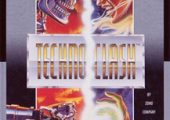
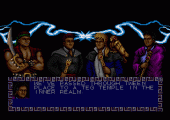
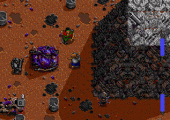
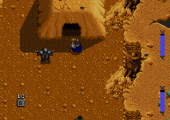
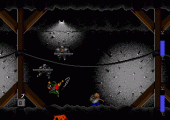
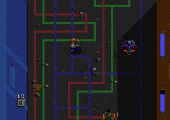
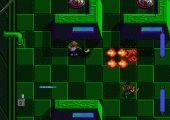
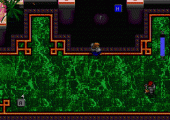
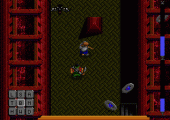
Recent Comments